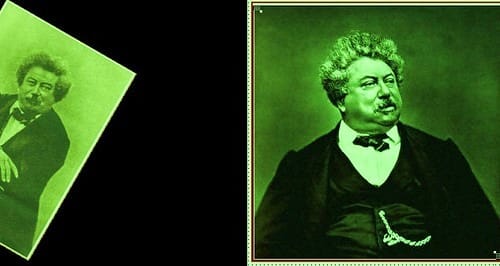Alexandre Gonsse de Rougeville, born in Arras on September 17, 1761 and died in Reims on March 10, 1814, is one of those fascinating figures in French history who straddles the line between reality and legend. It was this character, by turns adventurer, royalist, conspirator and usurper, who inspired Alexandre Dumas to write his novel Le Chevalier de Maison-Rouge (The Knight of the Red House). Through his actions and exploits, Rougeville embodies the tumult of the French Revolution, counter-revolutionary aspirations, and the twists and turns of the French campaign of 1814. Find out more about this character from Arras below.
An eventful youth: from the fields of Arras to revolutionary plots
Born at n°59 de la Grand’Place in Arras (see article photo), Alexandre Gonsse de Rougeville grew up in a privileged environment. His father, François Joseph Gonsse, was a prosperous merchant and farmer of beer, wine and brandy rights in Artois. The family owned several estates, including the seigneuries of Rougeville, Hastries, Saint-Laurent and Wetz. However, despite the addition of the title “Marquis de Rougeville” to his surname, Alexandre Gonsse was born a commoner. This modest background, in stark contrast to his ambitions and penchant for affabulation, led him to forge an identity that constantly oscillated between nobility and mystification.
At the age of 15, in 1776, he preceded the famous La Fayette and signed up to take part in the American War of Independence. This first act of daring already foreshadowed Rougeville’s inclination for reckless action. Back in France, he became squire to Monsieur, the brother of King Louis XVI, and became closely associated with the royal court, particularly Marie-Antoinette. This connection with the royal family was to shape his entire career during the Revolution. During the early years of the Revolution, Rougeville took an active part in royalist conspiracies, one of the most famous of which, the “Carnation Plot” in September 1793, aimed to free the queen imprisoned in the Conciergerie. This plot earned him a reputation as a sulphurous, romantic figure, a blend of heroism and mystery.
His birthplace in Arras :
A hunted conspirator and an incredible life
Behind the image of the knight ready to brave all dangers for the crown, Alexandre Gonsse de Rougeville is a character with a complex personality, often described as an affabulator and usurper. A ladies’ man, he was repeatedly betrayed by those closest to him, notably by his mistress, who denounced him during the “Carnation Plot” affair. Nevertheless, he managed to escape revolutionary justice, using stratagems and bribes. His escape from the Madelonnettes, two days before the the massacres of September 1792 remains one of the highlights of his adventurous life. His escape took him as far as Vienna, where he sought the help of Emperor Francis to rescue his aunt, Queen Marie-Antoinette. Accused by the émigrés of being a revolutionary, he was finally arrested by the Austrian authorities for seduction and debts.
The rest of his life was marked by a succession of prison stays, exiles and attempts to return to the political scene.
In 1794, he returned to France, only to be arrested again the following year. It was only with the victory of the royalists at the Conseil des Cinq-Cents that he regained his freedom. Rougeville returned to his native Artois, where in 1806 he married Caroline Angélique Boquet de Liancourt. For a time, he led a quiet life. But his adventurous temperament did not leave him in peace. In 1804, during the Cadoudal-Pichegru affair, he was once again denounced by his mistress. Although the gendarmes raided his château, he managed to escape underground, once again demonstrating his ability to get out of the most perilous situations. He was then placed under surveillance by Fouché’s police.

Alexandre Dumas draws inspiration from his own story in Le Chevalier de Maison-Rouge
La chute du Chevalier: from French campaign to literary work
In 1814, when France was invaded by Allied troops, Rougeville, who had never renounced his royalist ideals, joined the French campaign. He became a guide for Cossack troops through the forests of Villers-Cotterêts and Épernay, contributing to the fall of the latter town. But fate turned against him: a letter addressed to the Russian general fell into the hands of a French detachment. Immediately brought before the war council, Rougeville was shot within the hour against the wall of the Champ-de-Mars cemetery in Reims. Ironically, his execution came just as Saint-Priest’s troops were approaching, bringing King Louis XVIII with them.
But Rougeville’s saga did not end with his death. In 1846, Alexandre Dumas published Le Chevalier de Maison-Rouge, a historical novel inspired by Rougeville’s tumultuous life and his role in the Carnation Plot. The Chevalier’s character is presented as a desperate royalist, ready to do anything to save the monarchy, and gives Rougeville a romantic aura. This work, followed by a play of the same name in 1847, immortalized the figure of Rougeville, transforming him into a literary hero alongside the Musketeers and the Count of Monte Cristo. Later, in 1963, Le Chevalier de Maison-Rouge was even adapted into a TV series by Claude Barma. Rougeville remains an enigmatic character, torn between heroism and imposture. A tireless adventurer, he left his mark on the history of the French Revolution through his actions and his commitment to the royal cause. In Arras, his birthplace, his name and memory continue to fascinate. His life, punctuated by conspiracies, exiles, betrayals and bravery, illustrates the turmoil of an era when men’s destinies were turned upside down by political upheavals. Thanks to Alexandre Dumas, Rougeville has entered the collective imagination as the archetypal romantic conspirator, ready to sacrifice his life for an ideal.
R.C.
